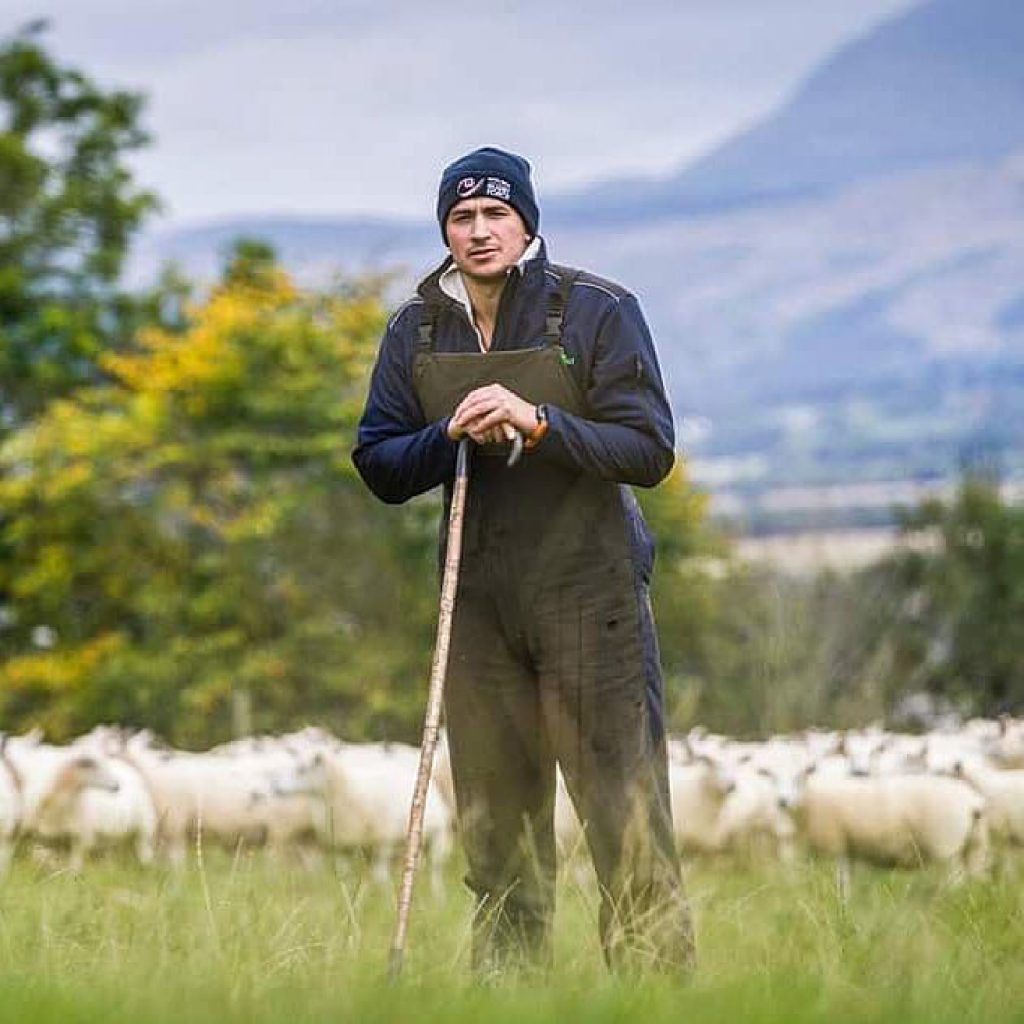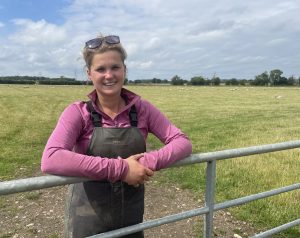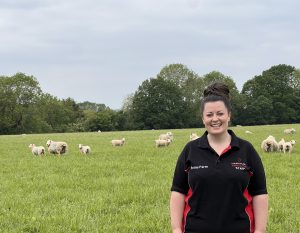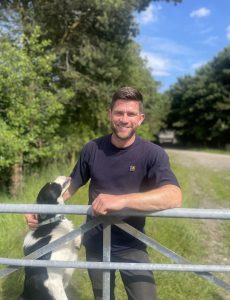with thanks to Calum McDiarmid and Ed Munt, Mains of Murthly, Aberfeldy, Perthshire
Swapping traditional Continental cross ewes for grass bred and reared Aberfield maternal genetics from Innovis managed in a rotational grazing strategy has enabled Calum McDiarmid’s Perthshire based Mains of Murthly flock to expand by 20% while cutting concentrate by 40%.
“Our whole system evolves around the ewe creating the ultimate mother capable of looking after herself and rearing her lambs from a forage-based diet,” explains head shepherd, Ed Munt. “Selecting a new damline was a decision for the long-term making and we’ve found the solution in the Aberfield which is suited to our low input grazing system.
“We’ve also been able to switch from 50:50 indoor/outdoor lambing, to a fully outdoor system enabling us to further reduce costs and improve the overall health of each season’s lamb crop. The Aberfields lamb easily, they’ve plenty of milk and are making really good mothers.
“95% of the ewes lamb within a three-week period with half the flock crossed to Aberfield SR rams producing home-bred replacements while the remainder lamb to terminal sires including a high index Aberblack with lambs finishing off grazed grass to target 42-44kg in an average 20 weeks.
We’re finding these rams to be hardy and virile which has also helped boost lamb vigour and daily liveweight gains, while the rams themselves appear to last, with several going out again as five and six shears.
“We’re finding these rams to be hardy and virile which has also helped boost lamb vigour and daily liveweight gains, while the rams themselves appear to last, with several going out again as five and six shears. They are introduced in a 1:70 ratio for two full cycles. Any ewes that fail to hold are culled with the exception of the gimmers.”
Turn the clock back to 2016 when Ed Munt had returned from New Zealand and joined the Mains of Murthly team managing a 1,000-ewe closed flock of Texel cross Cheviot Lleyn ewes. Texel rams had been used to produce home-bred replacement females and finished lambs sold off grass and concentrates. Together Calum McDiarmid and Ed introduced a rotational grazing system to approximately half the hill unit.
“Going forward, our initial focus was on grassland management to help improve performance and reduce concentrate usage; the next step was to introduce the Aberfield to start to grade up the flock, and we’re almost there, however we’re always looking to further develop its genetic potential and subsequent performance. Pure Aberfields are slightly smaller averaging 68kg mature weight and definitely proving to be more suited to a forage-based ration which, combined with rotational grazing, has enabled us to increase flock numbers.”
Lowland fields are shut off from January, while the entire flock is out wintered in hill paddocks and supplemented with high quality white clover, ryegrass round bale silage for approximately 10 weeks pre lambing commencing in April. The system has enabled concentrate fed to twin and triplet bearing ewes to be reduced from three months to just four to five weeks pre-lambing after which ewes and lambs are stocked on clean pastures. “We aim to target 1,100kg DM/ha covers for those with singles and 1,450kg DM/ha plus for twin bearing ewes at the point of set stocking pre lambing, after which we condense the flock to five mobs; each grazes its own rotation of paddocks for three to five days on a 21 to 35 day rotation,” Ed explains.
“The strategy has also highlighted the importance of monitoring and understanding not only the flock’s nutritional needs throughout the season but also its health. Our main focus here is on stomach worms and internal parasites and getting a full picture of anthelmintics and anthelmintics resistance. We’re aware that grazing intensively stocked areas, multiple times throughout a season can cause a large buildup of parasites on pastures.
“We’ve recently introduced FECPAK to enable us to more efficiently monitor these issues and in turn act by targeting specific parasite challengers throughout the year, as and when they present themselves.” Mains of Murthly also tests for iceberg diseases and uses bloods to monitor any additional trace element requirements, while it annually reviews the flock’s health plan with its vet to work through any issues, prevent future problems and reduce costs.
The unit’s attention to detail also extends to BCS. “It’s a big focus for us throughout the whole year from weaning to lambing during which period we score six times and aim for BCS 2.5 to 3. Maintaining the ewe in the correct fettle for the period she’s in lamb is a major factor in her achieving the percentage output we are after,” he says. “We manually handle each ewe, feel along the bottom of her backbone and score her on the coverage across the top of her hips in order to determine how fit or lean she is and whether or not she needs to go onto priority grazing or be pushed on a poorer quality diet.”
We believe we’ve developed a system that’s future fit – a combination of the Aberfield damline suited to our grazing system which is also conducive to carbon sequestration.
He adds: “We believe we’ve developed a system that’s future fit – a combination of the Aberfield damline suited to our grazing system which is also conducive to carbon sequestration. Continued improvement to pasture quality and diversity will help fix nitrates from the atmosphere, which in turn will reduce and eventually eliminate the need for artificial nitrogen whilst giving us a quality grazable sward to reduce days to slaughter.”
Ed Munt will be talking about the system at Mains of Murthly at NSA Scotsheep on Wednesday 5th of June. Come along to Workshop area 2 in building 4 at 10am and 1:05pm.



